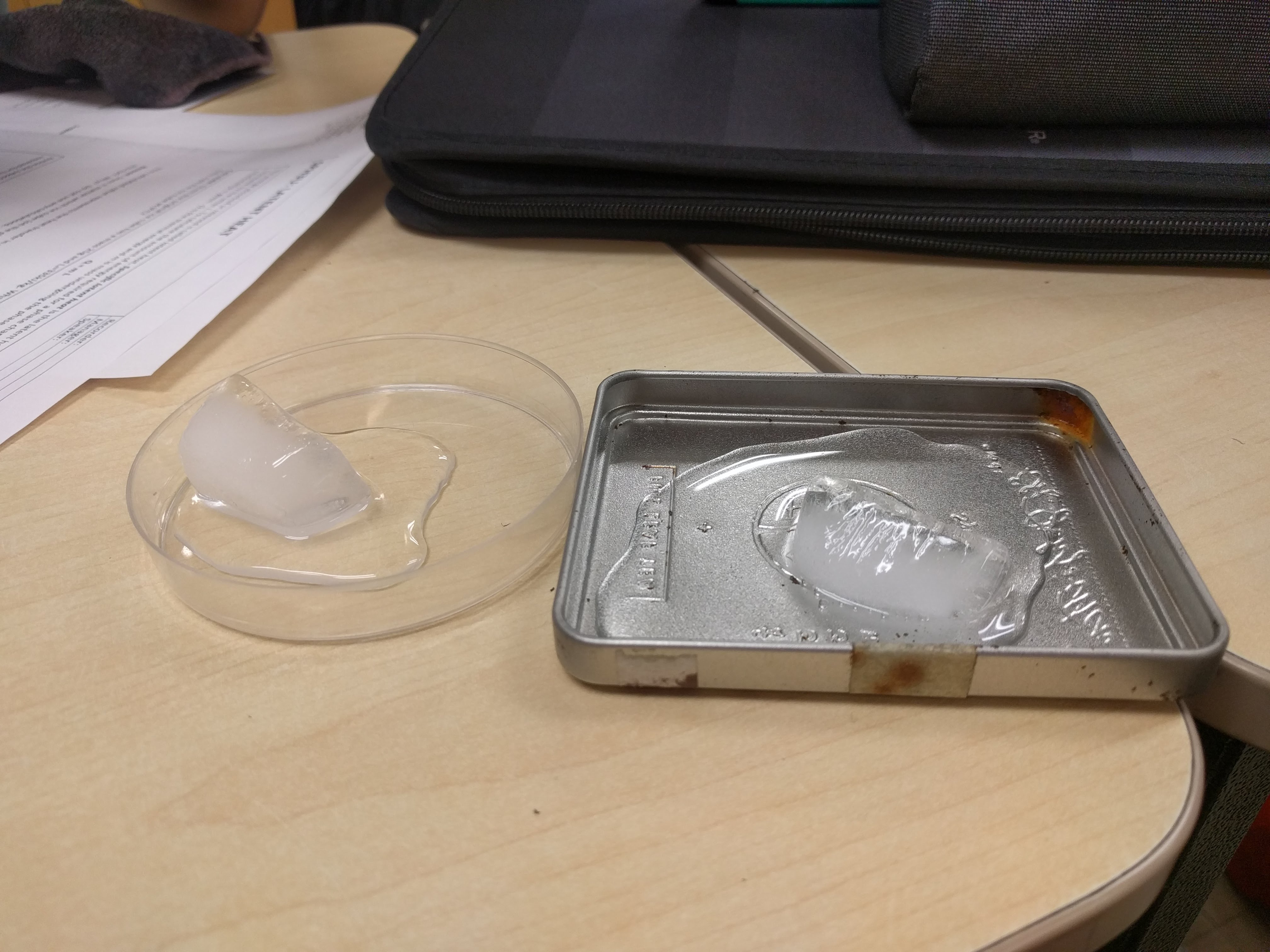Ice Cubes and Latent Heat
Today we did an experiment with ice cubes and plates, and in turn we learned about latent heat
Today I learned:
Metal is better at transferring heat than plastic, as it is a conductor and plastic is an insulator. This brings the heat to the ice cube faster, and that is why the ice melted faster on the metal plate than on the plastic plate. It is quite interesting, as metal was the one that felt colder on first touch of skin but can melt ice faster. It’s better at heat transfer, so it heats and cools faster.

The ice in the metal cap is melting faster than the ice in the plastic cap
Latent heat is energy that is absorbed or released. Specific latent heat is latent heat of 1 kg of material, represented by an L. Latent heat absorbed or released can cause a change in temperature.
The equation for all of this is Q = m L. Where Q is the thermal energy, m is the mass, and L is the latent energy. This means that the same amount of latent heat is absorbed/released by the ice and the metal compared to the ice and the plastic. What differs is the time that this takes, where the metal does it much faster.
Today I wondered
What would the energy be like for getting an solid to a gas? For example, how much energy would it take to get an icecube directly to steam? I have a feeling that it would be the same, but I also feel like it would take more energy to skip the water.
Why is the f in Lf stand for fusion? When ice becomes water, the particles become more spread out, so they shouldn’t really be called ‘fusing’ together.
Today I had an intriguing idea
If the metal cap was colder than the plastic cap, at a certain temperature the two caps would melt the ice cube and finish at the same time. Because the metal cap transfers heat to the icecube faster, it would melt it faster. But since it is colder, it would take longer. At a certain point, they would be the same.
calculation coming soon